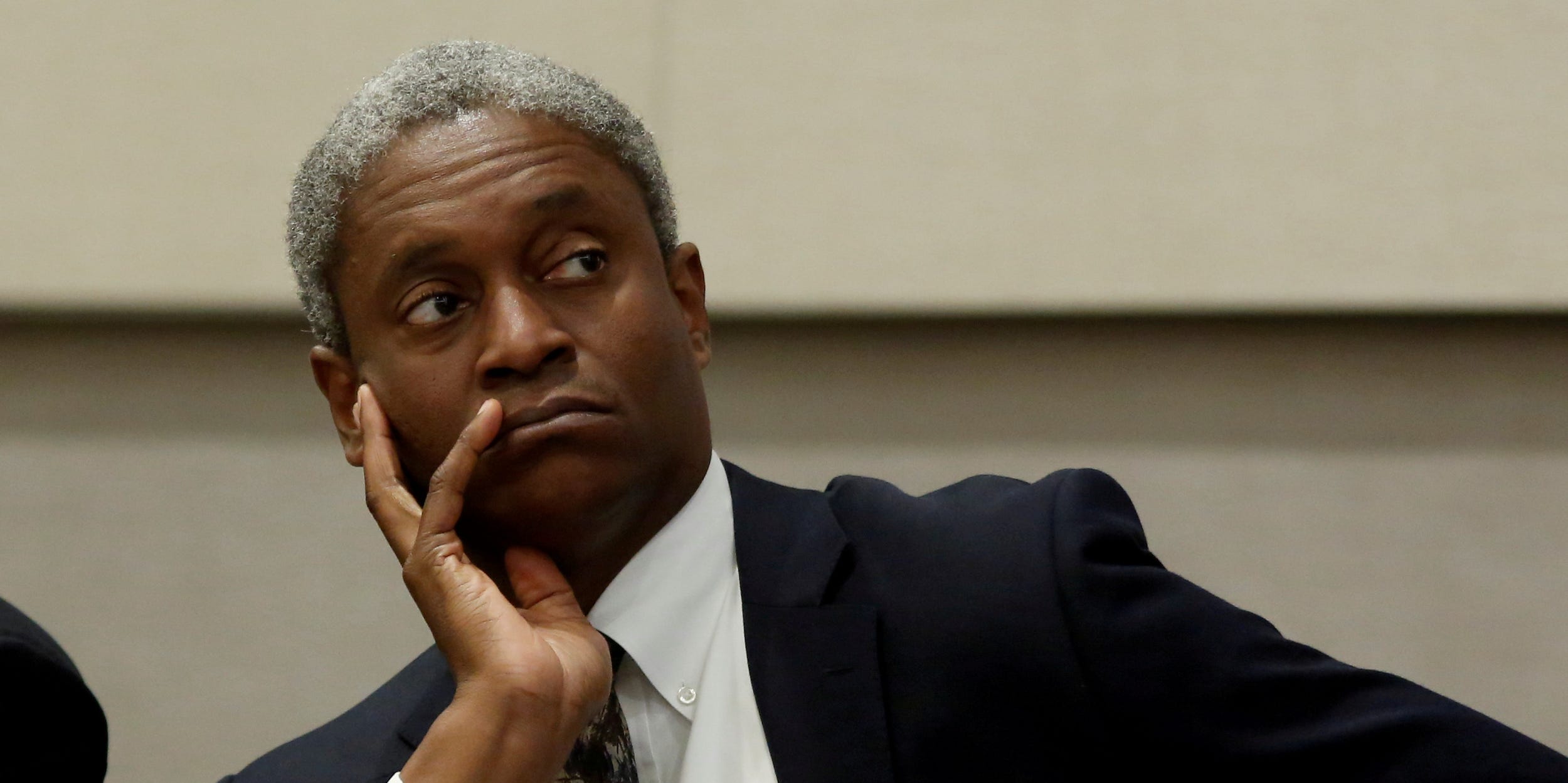
Christopher Aluka Berry/Reuters
- There's "definitely" merit to considering reparations as the US recovers, Raphael Bostic said.
- The Atlanta Fed president highlighted the policy approved in Evanston, IL as "quite interesting."
- Failure to close racial gaps in hiring leaves future economic growth on the table, Bostic added.
- See more stories on Insider's business page.
Serious consideration of reparations has made its way to the Federal Reserve.
The coronavirus' impact and the subsequent rebound have largely left low-wage and minority workers struggling to keep up. With the Fed actively pursuing a more equitable labor market through the recovery, reparations could emerge as a possible solution. Just listen to Raphael Bostic, the first Black regional Fed president.
There's "definitely" merit to discussing reparations as a counter to longstanding racial disparities, Bostic, president of the Federal Reserve Bank of Atlanta, said Monday.
A debate about the viability of reparations has intensified over the past decade following a famous 2014 essay by journalist Ta-Nehisi Coates called "The Case for Reparations." President Joe Biden's election victory last year coincided with renewed calls for Congress to take reparations proposals seriously.
Some local governments are already taking direct action. The Chicago suburb of Evanston, Illinois, approved the country's first reparations program last week, setting a foundation for other cities to explore potential measures. Evanston's program will dole out $400,000 in housing and mortgage assistance to Black residents whose ancestors lived through discriminatory policies such as redlining.
Evanston's reparations program is "quite interesting" and "many others should be thinking about it" as the country rebounds, the Atlanta Fed president said in a CNN Business interview.
"There are definitely merits to it, in the sense that, if people have been harmed by laws, then there should be a discussion about redress," Bostic said. "We have to think about what things are necessary to offset the impacts of those old systems that still flow through."
Bostic became the first Black president of a regional Fed bank when he was hired in 2017. Since then, he's headed several efforts to study how inequality holds back growth.
Economic disparities remain in the labor market as hiring slowly picks up. While the unemployment rate for whites fell to 5.9% in February, it's still 10.2% for Black Americans. The rate was 9% for Americans with Hispanic or Latino ethnicities.
Failure to close these gaps through the rest of the recovery can leave millions of Americans behind and, in turn, give way to weaker growth, Bostic said.
"We are losing, collectively, their potential for productivity, we're losing their ideas and innovations. That can translate into a smaller economy, a less resilient economy, and a less robust economy," he added.
The Fed president sees the labor market returning to pre-pandemic health either at the end of 2022 or in 2023. Such a pace of recovery would be a major improvement from the sluggish rebound seen after the financial crisis. Yet the Fed has indicated it will keep interest rates low until other gauges like wage growth and labor force participation also return to levels seen before the health crisis.
Americans will get their next look at how the recovery is progressing on Friday when the government publishes its monthly nonfarm payrolls report. Wall Street economists expect gains to be notably stronger than the 369,000 payrolls added in February.
